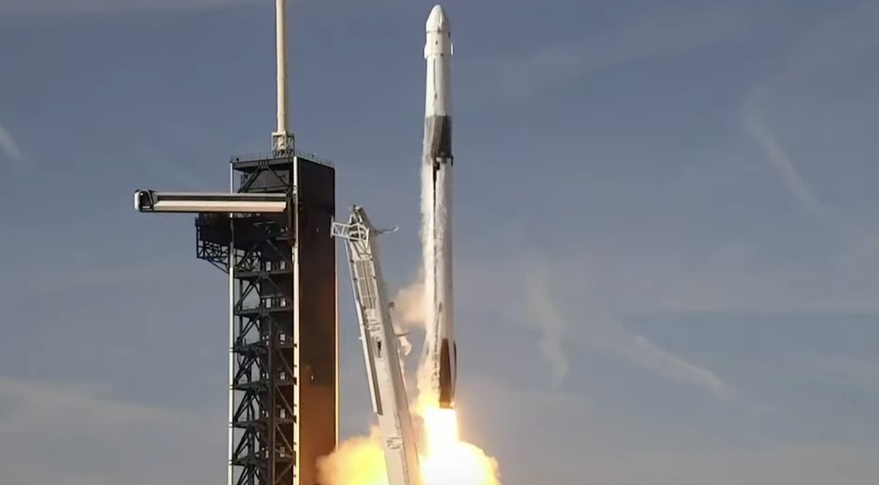Products You May Like
WASHINGTON — A brand new SpaceX Falcon 9 successfully launched a new cargo Dragon spacecraft Nov. 26, carrying supplies, experiments and new solar arrays for the International Space Station.
The Falcon 9 lifted off from the Kennedy Space Center’s Launch Complex 39A at 2:20 p.m. Eastern. The rocket’s upper stage deployed the Dragon spacecraft into low Earth orbit 12 minutes later. The rocket’s first stage, making its first flight, landed on a droneship in the Atlantic Ocean.
The launch was previously scheduled for Nov. 22 but scrubbed because of poor weather. SpaceX waited until after the Thanksgiving holiday for the next launch attempt in part because of efforts to limit airspace restrictions during the busy travel period, as well as to refresh cargo on the spacecraft.
The Dragon spacecraft, also making its first flight, is scheduled to dock with the ISS Nov. 27 at about 7:30 a.m. Eastern. It will deliver 3,528 kilograms of cargo to the station, including supplies for the station’s crew, research experiments and hardware.
That hardware includes two ISS Roll-Out Solar Arrays, or iROSA. The arrays will be installed during two upcoming spacewalks by space station astronauts, joining two others installed last year. NASA plans to ultimately install six iROSA arrays to augment the station’s power supply as the station’s original arrays age, ensuring sufficient power to operate the station through its anticipated retirement in 2030.
Experiments delivered to the station on Dragon include the latest version of a plant growth payload called Veggie that will attempt to grow dwarf tomatoes in microgravity. The Dragon is also carrying a handheld microscope that will be tested in the station to see how it could be used to study blood samples on future missions to the moon and Mars.
The Dragon is carrying four cubesats for NASA’s Cubesat Launch Initiative that will be deployed from the station. Two of the cubesats, petitSat and SPORT, were built by NASA’s Goddard and Marshall Space Flight Centers, respectively. A third, MARIO, comes from the University of Michigan, while TJREVERB was built by students at Virginia’s Thomas Jefferson High School for Science and Technology.
The Dragon will remain at the station for about 45 days, longer than a typical mission that remains docked to the station for a month. At a Nov. 18 pre-launch briefing, Joel Montalbano, NASA ISS program manager, said the extended stay will give astronauts time to perform the spacewalks required for the iROSA installation and meet science requirements. Dragon will splash down off the Florida coast to return science payloads as well as some ISS hardware.
SpaceX said before the launch that this mission will be the first flight of the third and final cargo Dragon spacecraft it anticipates building. It will join four Crew Dragon spacecraft currently in service with a fifth under development. Those spacecraft, capable of flying up to 15 times each, will be sufficient to meet NASA’s requirements under commercial cargo and crew contracts through the end of the decade.
